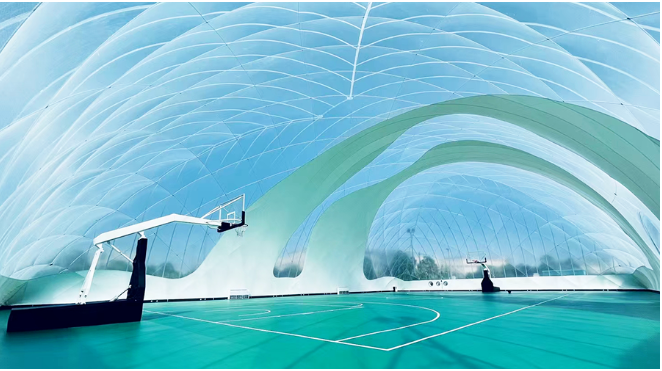News
Site Editor
 Site
/uploads/image/677267645dfcf.png
Site
/uploads/image/677267645dfcf.png
How Long Should The Air In The Dome Have Lasted
Views: 2036
Author: Site Editor
Publish Time: 2023-07-07
Origin: Site
The idea of a dome is very interesting, as it is a structure that can be used in different ways. Sometimes it is used as a sports venue, sometimes as an exhibition hall, and sometimes even as a venue for concerts. However, one important factor in the design of any dome is the air quality, as it affects the people within it. How long should the air in the dome have lasted is a key question that must be answered. This article will explore the factors that determine how long the air in a dome should be able to last.
The Importance of Air Quality in Domes
Air quality is an essential factor that architects and engineers must consider when designing domes. There are several reasons why it is important to maintain good air quality in a dome. First, when a large group of people is gathered in a relatively small space, it is important to ensure that the air is fresh and clean. Second, air quality has a direct impact on the health and well-being of those who are in the dome. If the air quality is poor, it can cause respiratory problems, headaches, fatigue, and other health issues. Additionally, the air quality in a dome can affect the performance of athletes and musicians who perform there.
The Factors Affecting How Long the Air in a Dome Should Last
There are several factors that affect how long the air in a dome should last. These include the size of the dome, the number of people in the dome, the activity level of those people, and the air conditioning systems that are installed in the dome. Generally speaking, larger domes can hold more people, and as a result, they require more air circulation systems to maintain good air quality. Additionally, the type of activity that is taking place in the dome will affect the air quality. For example, if a lot of energy is being expended through exercise or dancing, more ventilation will be required.
The Ideal Rate of Air Circulation in a Dome
There are standard guidelines that determine the ideal rate of air circulation in a dome. The American Society of Heating, Refrigeration, and Air Conditioning Engineers (ASHRAE) recommends that the air in a dome should be completely replaced every hour. Additionally, ASHRAE recommends that there should be a minimum of 20 cubic feet per minute of fresh air for each person in the dome. This rate of air circulation will help to maintain good air quality and keep the people in the dome healthy.
The Conclusion
In conclusion, how long the air in a dome should last depends on various factors, including the size of the dome, the number of people in the dome, the activity level of those people, and the air conditioning systems that are installed. The ideal rate of air circulation in a dome is recommended by ASHRAE, which suggests that the air in a dome should be completely replaced every hour and that there should be a minimum of 20 cubic feet per minute of fresh air for each person in the dome. By following these guidelines, architects and engineers can ensure that the air in a dome is of good quality and that the people within it remain healthy and comfortable.








